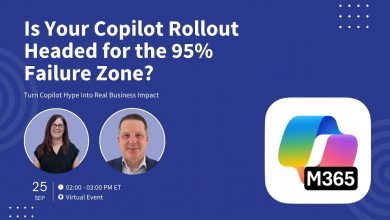Viva Goals: Implementing a System of ‘OKRs’ – Objectives and Key Results
By using objectives and key results, organizations can precisely align team- and individual-level goals with broader targets.
 In today’s fast-paced business environment, organizations are constantly seeking ways to enhance performance, define and manage enterprise transformation.
In today’s fast-paced business environment, organizations are constantly seeking ways to enhance performance, define and manage enterprise transformation.
One effective strategy that has gained popularity is the use of Objectives and Key Results (OKRs).
By setting clear objectives and measurable key results, companies can align their teams towards common goals and drive high performance working practices.
In this guide we explore the concept of OKRs and how organizations can utilize them to achieve high performance working practices. We delve into the principles behind OKRs, discuss best practices for implementation, and provide insights on how to drive performance excellence through this goal-setting framework.
OKRs: Objectives and Key Results
This is where the broader 365 suite becomes especially important, most notably offering tools to implement a framework of ‘OKRs’ – Objectives and Key Results, a goal-setting framework used by individuals, teams, and organizations to define measurable goals and track their outcomes.
As the term suggests this is a simple system of stating what goals the organization wants to achieve, and what project initiatives they need to implement to achieve them, so that they can easily monitor and understand what progress they are making towards them. They enable teams to not only envision success but to map out a practical pathway to attain it.
In this MIT article, they describe that traditional goal-setting methods, such as the SMART method, team members set objectives based on intuition and experience, often in isolation. Such approaches, which rely on established practices and individual expertise, have their merits but can lack the dynamism and collaborative energy needed in today’s fast-paced environment.
With the objectives and key results (OKRs) approach, on the other hand, ambition meets precision. Here, teams set clear, measurable objectives aligned with organizational goals, fostering a culture of accountability and collective effort and establishing quantifiable steps to track and achieve these aims. OKRs stand out for their focus on defining clear, measurable, and achievable goals.
Through the establishment of specific, quantifiable outcomes and the adoption of regular progress reviews, OKRs foster a culture of accountability and adaptability. This methodology is particularly well suited to the demands of today’s fast-paced business environment, where agility and precise goal alignment are critical determinants of success.
Viva Goals
For this Microsoft offers ‘Viva Goals‘, with the critical facet being that this isn’t some standalone enterprise application that staff find cumbersome to use and thus counter-intuitive to the objective.
In contrast they offer an approach where the functionality is built directly into the collaboration environment that teams are already using, making it a natural component part of their daily work.
As the Microsoft Mechanics demonstrate in this video that if you’re a manager or a team member, Viva Goals makes it easier to align and stay focused on the strategic priorities of your organization and work together to accelerate progress.
Vetri Vellore, Viva Goals team lead at Microsoft, joins Jeremy Chapman for a closer look at how this brand-new goal setting and management solution helps drive clarity around your objectives and key results, and makes it seamless for teams to track progress against them as they work.
Project, Planner and Teams
Critically Viva Goals also integrates with the Project app, and also with their ‘Planner‘ app, and all of these integrations can be driven from within Teams.
As explained here you can connect Project to Viva Goals, where you can track progress on OKRs and the projects that align to them by leveraging the Project for the web integration with Viva Goals as a single source of truth.
Similarly Planner offers a lightweight Project Management environment, where you can easily set up project structures but without having to go into a full PM mode, such as Kanban Boards to schedule, visualize and manage team tasks, and as it matures to a more complex body of work you can then migrate it into Project.
Both Planner and Project can be integrated into Teams so that organizing and progressing project tasks are a natural and fluid function of live team work. Furthermore there are features that help individuals better manage their own workload, such as ‘Assigned to Me’. You can quickly catch up or stay on top of tasks that you own by identifying recent progress or changes that impact the schedule with Task History in Project.
In an era marked by rapid technological advancements and a dynamic shift in workplace cultures, teams’ ability to collaboratively set, pursue, and achieve corporate goals has become more critical than ever. This evolution reflects a deeper understanding of the importance of collective effort and a shared vision of achieving success.



